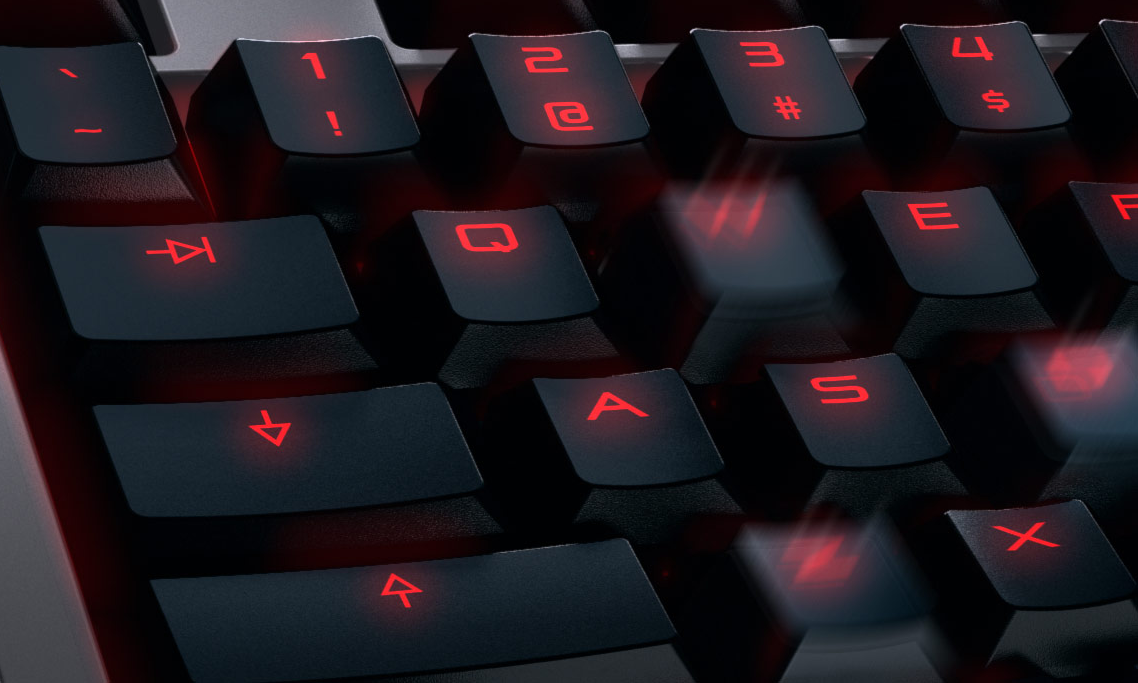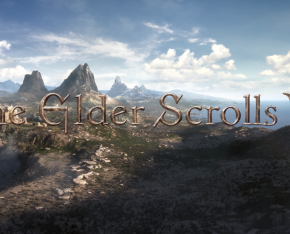By Jeff Bond on September 26, 2015 at 12:07pm
Every keyboard you see targeted at gamers has bells and whistles, this is a fact of life. Among all of these bells and whistles though, one thing always stands out as the pinnacle of features: mechanical keys, and when folks think of mechanical keyboards, the first name that pops into people's minds are Cherry switches. A few weeks ago, I was approached by Cherry to try out their new Cherry MX 6.0 Board (with Cherry red switches) and couldn’t turn down the opportunity to see what all the fuss was about.
Build Quality
Right off the bat, this keyboard is the most solid keyboard I have ever encountered. Instead of being made of plastic, the frame is made of solid aluminum. The kickstand feet firmly click into position. The cable is wrapped to help protect it. The key caps feel very nice and the backlight is very bright. The magnetic wrist rest feels just as premium as the rest of the keyboard. You’re paying a premium for this board, and the build quality clearly shows what that extra investment gets you.
Usage
As you would expect from a mechanical keyboard, it’s got some volume to it when you are typing away. You definitely hear the signature clickity-clack of the keys as you use it.
The backlighting on the keys is also very vibrant when you want it to be, and can be dimmed quickly and easily if desired. The backlighting does have one odd quirk though, amidst this sea of red, there are a few keys which are blue: Windows, Caps Lock, Num Lock, and Scroll Lock. For some keys, this makes sense, they are red by default but switch to blue when toggled. For things like the Windows key though, it makes a little less sense, this key does not change from red to blue, it is permanently blue, and seems a little jarring and out of place on the board.
For general typing, such as writing this review and posting on message boards, this thing is a champ. Let’s be honest though, we’re here for gaming. After two weeks of gaming with this board in titles such as World of Warcraft, Final Fantasy: XIV, Heroes of the Storm, Starcraft II, and more, I found that my experience was almost exactly as responsive as I could have ever wanted. There were a few situations where I accidentally spun myself around in circles because I had half-pressed the A or D keys while my hand was resting in a WASD pattern, but that was entirely user error from not being used to keys that you don’t have to fully depress to activate, and I quickly eliminated that bad habit. In fact, the only issue I found with this board was the Tab key. As I was using Tab to switch between targets, I noticed that it wasn’t as smooth as the other keys, and I felt some resistance, as if I was pressing the key off-center. This was the only key that I noticed have this behavior, it didn’t occur with similarly sized keys such as Shift, Enter, or Backspace. Now if this were a generic keyboard that my grandmother used, I’d dismiss it and not think too much of it, but this keyboard is a premium product targeted at nerds and gamers, and as such, we tend to use the Tab key a lot, whether it be Tab targeting in gaming, or writing code. Maybe I just got a bum Tab key, or maybe it was the way I was holding my hand on the board, but it broke the immersion of a premium keyboard.
Recap
This keyboard has become my new daily driver. Small quirks aside such as the blue Windows key and slightly sticky Tab key, this thing is solid and works like a dream. Yes, it’s louder than a traditional keyboard, but that’s just how mechanical keyboards are.









